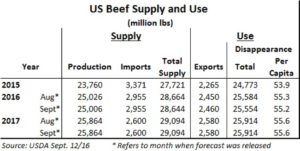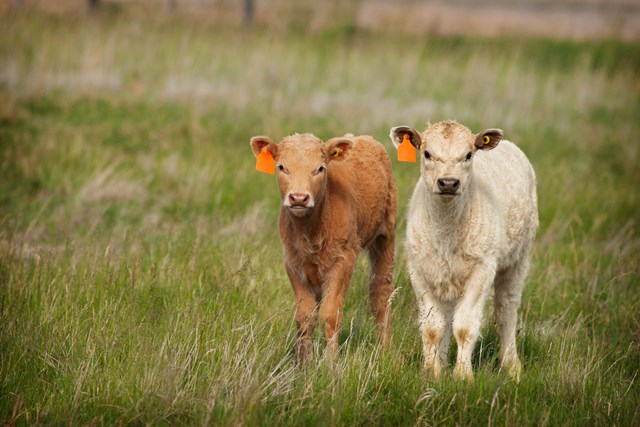By John DePutter & Dave Milne, DePutter Publishing Ltd.
Even with all the ink that has been devoted to downtrodden cattle futures, it’s probably not a stretch to think that somehow the producer has been forgotten.
Because behind all those down-trending futures charts and up-trending supply charts are real people with real bills and mortgages to pay. And the situation for them is just flat out ugly. While it’s true that cattle producers enjoyed record margins and profits through much of 2014 and into the first half of 2015, it is also true that fed cattle futures recently touched six-year lows, while cash prices are terrible as well.
In fact, the losses that have been incurred in the cattle business since those salad days of a couple of years ago have now likely more than erased the gains, said Anne Wasko, marketing analyst with Gateway Livestock in Taber, Alta. In some cases, producers are losing hundreds of dollars for every head they’re selling. For the big operations, that kind of red ink can ring up total losses in the millions.
“These just aren’t nickel and dime losses – these are huge losses,” Wasko said in an interview last week. “Now, those (losses) do fall on the heels of record high profits. . . but you can safely say when you do the math on the dollars lost in this latest round, versus the dollars made in ’14 and ’15, we’re now on the negative side of that ledger.”
For beef producers in the U.S., those heavy losses have been piling up for about 18 months now, while those in Canada have been seeing red ink for about 14 months, Wasko added.
The grassroots cow-calf producer has made out relatively better than their feedlot counterpart over the past year and half, but Wasko said she expects things will begin to change for them as early as this fall, as the feeders try to regain whatever margin they can by pushing down the price they pay for replacement cattle.
Long term outlook still negative
Eventually, lower prices will trickle down through the entire supply chain. But even as bad as things have gotten in recent months and weeks, Wasko said the long-term view suggests there may be plenty more pain for producers on the horizon. With the behemoth U.S. cattle herd in the midst of expansion after the long, deep drawdown primarily brought on by drought on the southern American Plains, it may be years before the supply finally crests.
“Big picture is more (beef) supplies next year, more supplies after that. That’s just how the cattle cycle works,” she said. “Based on that, one has to jump to the conclusion that – barring any change in our exchange rates or anything like that – we’re probably looking at a lower trending market over the next few years.”
For now, worst may be over
In the nearer term, things admittedly do look more hopeful. After dropping to six-year lows earlier this month, fed cattle futures have rallied a little, and Wasko said it’s likely the bulk of the decline is over for now.
As well, beef demand typically begins to improve heading into the fourth quarter, and that demand increase could be even more keen if grocery store beef prices start reflecting some of the decline being seen by producers. Hamburger prices have already started to come down, but Wasko said prices on the more premium cuts still have further to go to help spark more consumer buying.
The latest USDA supply-demand estimates (released Sept. 12) were also somewhat more optimistic. Total expected beef output for this year was trimmed slightly to 25 billion pounds, and competing pork supplies fell to 24.91 billion pounds. Those are both still higher than in 2015, but down from the previous month – likely the result of producers sending lighter weight animals to market to help offset the increase in total numbers.

What’s it all mean? Three key points:
- The editors of this twice-weekly report pointed out earlier this month that some of our indicators hinted the break in futures was overdone. With extremely bearish outlooks becoming commonplace and low deferred futures prices reflecting the negativity, we actually had a contrary opinion signal for a low in the futures markets. Futures did rally a little; now we wait to see if they can do more.
- Cash prices for beef, finished cattle and feeder cattle will vary across North America and in some cases could also be gradually establishing important lows, just as futures might be. Whatever the details of the timing and the precise lowest prices, it could be said that in general, this looks like a market that has overplayed the downside.
- Whether the down trend for prices just loses its bearish momentum, or stabilizes for awhile… or whether prices actually rally for several weeks or months, we will have to live with rising cattle numbers, along with more pork and more chicken (as shown in the table below), in the months ahead.

The last word
“There’s hope,” agreed Wasko. “But we also need to be cognizant of the overarching fact there’s lots of meat out there.”
Brought to you in partnership by:



